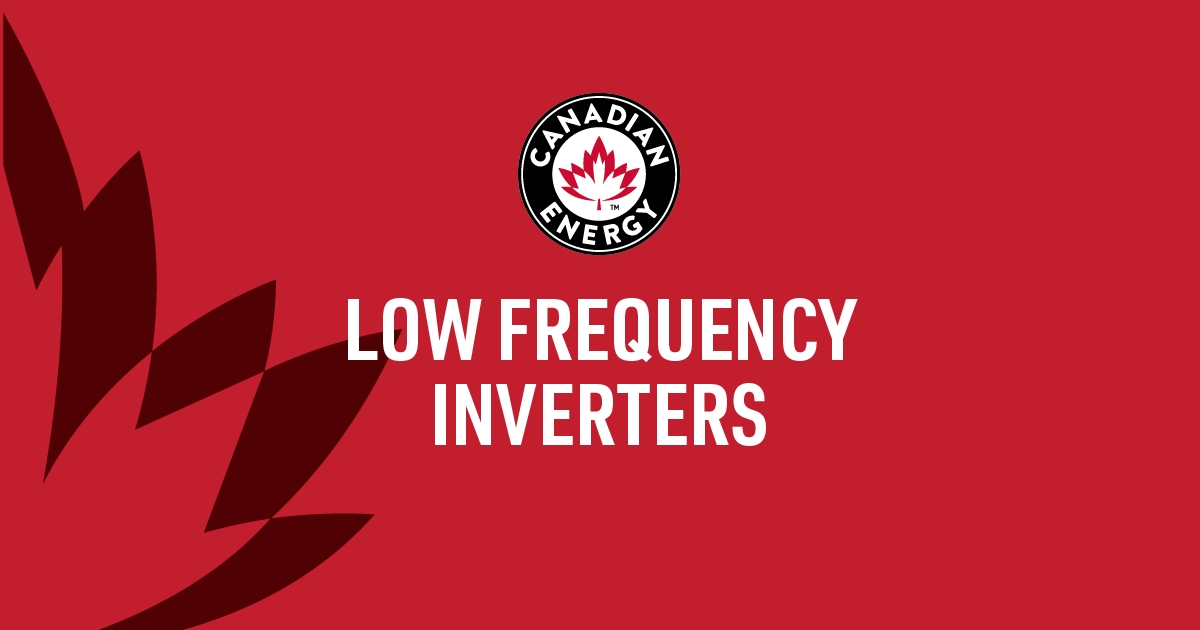Low Frequency Inverters

So what are the characteristics or differences in low-frequency or transformer-based inverters? Well, number one, typically this inverter is going to be a larger footprint, it's going to be bigger and/or heavier than our typical high-frequency inverter. Why is it going to be bigger and heavier? Well, inside a low-frequency inverter, it contains a large copper transformer. That copper transformer is going to be what converts the DC voltage to AC voltage versus in a high-frequency, where it's got electronic components in it, so not as heavy, doesn't take up as much room. Some of the performance characteristics of a low-frequency inverter would be the surge capability. Now, surge capability, from a pure wattage standpoint, will be similar to a high-frequency,so it's typically two times the rated continuous output, sometimes as high as three, but in most cases, two times the rated continuous. So a 2,000-watt inverter would be capable of 4,000-watt surge capacity. The difference being the surge time on a low-frequency inverter is approximately five seconds versus a high-frequency inverter that'll surge for about five milliseconds.
So where does this make a difference? This makes a difference when we're starting motors under load, so compressors and air conditioners would be two common things, motor loads that start under load and require high surge capability that often times a high-frequency inverter won't start no matter what the surge rating is. The other time we would use a transformer-based or low-frequency inverter is if it's got a long continuous draw. So if it's working all day long, we'd want to go with a transformer-based inverter because typically that copper transformer isn't going to wear out near as fast as electronic components, thus, you're going to get longer life out of a low-frequency inverter. And typically we're going to find low-frequency inverters in renewable applications, off-grid applications where the loads are larger and longer versus mobile. But again, mobile applications that have large motor loads are where we're going to find low-frequency inverters.
